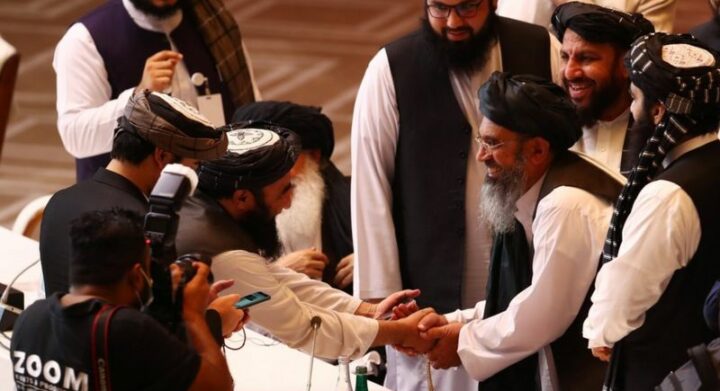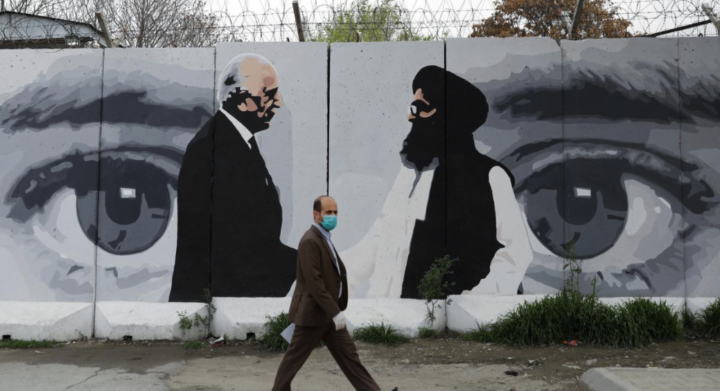Some say that the intra-Afghan peace talks in Doha, Qatar represent a unique opportunity to change the current state of conflict in Afghanistan. However, even if the parties manage to negotiate a peace agreement, the road to a peaceful society is long and it will require the commitment from the entire population, including youth.
Afghanistan is a country with a very young population. Over 60 percent are under the age of 25 and roughly 46 percent are under the age of 15. Currently, youth feel excluded from the peace process which is problematic since they represent the vast majority of the population, and also because they are an important factor in building peace. Therefore, this piece will focus specifically on the meaningful participation of youth in the peace process; why this is important and what some of the challenges are.
Because of the conflict, young people in Afghanistan face significant challenges relating to health, education, employment and gender equality. With decades of lost educational opportunities and unemployment, a great burden has been put on young people. In particular, young men are often forced to assume the role of breadwinner in order to fulfill their perceived obligations and duties to their family, and they can end up involved in organized crime or other illegal, often violent, activities. Young women face other challenges because of their gender. This includes direct violence and low-level harassment, which is affecting how they can physically move in society as well as their opportunities to participate in, for example, politics.
Youth in Afghanistan have expressed serious distrust in governmental and local leaders because of issues such as corruption as well as the undermining of younger leaders. Moreover, research shows that young people feel excluded from the political discussions around the peace process. At the same time, there are numerous examples of how young people engage in peacebuilding. This includes raising awareness of the peace process among the younger generation and working to engage them as committed stakeholders, the establishment of the mechanism National Youth Consensus for Peace, and presenting a declaration listing expectations of the current peace talks in Doha. A final example is an organization that was founded using art, education and critical thinking to promote social tolerance among communities.
The Youth, Peace and Security Agenda
By introducing youth as agents of change and highlighting the diversity of youth in the field of peace and security, the Youth, Peace and Security agenda was established in 2015. The United Nations Security Council Resolution 2250 recognized for the first time young people’s important and positive role in preventing and resolving conflict, countering violent extremism as well as building peace. Since then, additional resolutions have been adopted (2419 and 2535) and work carried out so far concludes that “including youth in peace processes will result in more inclusive and representative governance structures that will foster more peaceful societies”.
As demonstrated, to ensure the meaningful participation of youth is not only important from an altruistic perspective that all of society should be involved in what is essentially their peace process. Instead, a broad buy-in from society is vital for a peace agreement to be followed by a successful implementation phase and in addition, research shows that countries with a young population suffer an increased risk of conflict. Youth is therefore important also from the perspective of preventing the eruption of new conflict.
Negative Stereotypes Standing in the Way of Meaningful Participation
Just like champions of the Women, Peace and Security agenda are working to break down stereotypes and broaden the understanding of gender and women, those working for the participation of youth are faced with similar challenges. This includes stereotypes and assumptions that youth consists of only young men, that youth are violent and peace spoilers instead of peace activists as well as the perception of young women as being vulnerable and passive. There is a default thinking about youth in Afghanistan that tends to be overwhelmingly negative and as a result, this narrow and homogeneous view of young people as either perpetrators or victims has been and continues to be problematic for their participation.
To conclude, youth form the vast majority of Afghanistan’s population and they are distinctively impacted by the decisions made in the current peace process. Moreover, they are not only significant in building peace, but also responsible of doing so for decades to come. There are many examples, more than mentioned in this short piece, about how young Afghans work to build peace in their societies and how they are not necessarily fitting into any of the existing youth stereotypes.
Understanding and acknowledging the diversity of youth is one of the keys to understanding their potential. As the future leaders of their country, the meaningful participation of youth needs to be enabled by the people currently in power and this should be done for the future of a more peaceful Afghanistan.







